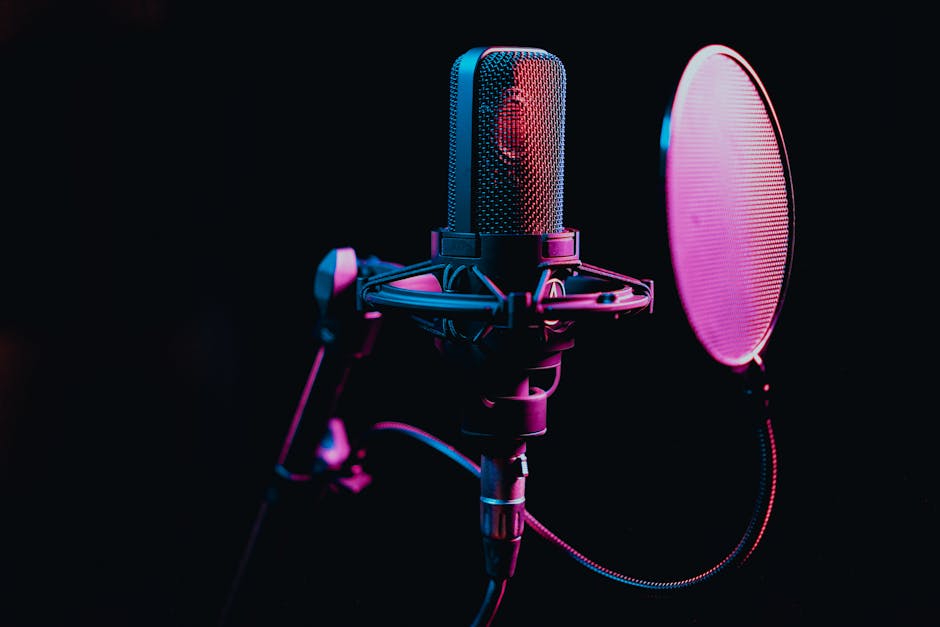My Review of Ai-powered Tools for Podcast Editing (automating the Tedious).
My Review of AI-powered Tools for Podcast Editing (Automating the Tedious)
Let’s be honest: podcasting is a labor of love, but the “love” part often gets tested when you dive into post-production. The sheer volume of tedious tasks – chopping out “ums” and “ahs,” leveling audio, scrubbing background noise, trimming silences – can drain your creative energy faster than a poorly mixed episode drains a listener’s patience. For years, I endured this manual grind, dedicating countless hours to the minutiae of sound. That is, until I finally decided to embrace the promise of AI-powered tools. This isn’t just a trend piece; it’s my personal deep dive into how these intelligent assistants have genuinely transformed my podcast editing workflow, making the once-dreaded “tedious” remarkably efficient.
My First Impressions: Shifting from Manual Drudgery to AI Assistance
Stepping into the world of AI for podcast editing wasn’t a sudden leap; it was a gradual, almost hesitant, transition. For so long, my editing process was deeply ingrained: import, listen, pause, cut, listen again, adjust volume, repeat. It was meticulous, yes, but also soul-crushing after the tenth episode in a row. My initial skepticism centered on whether an algorithm could truly understand the nuances of human speech and the subtle art of audio flow. Could it really distinguish between an intentional pause for dramatic effect and an accidental gap? Would it make my voice sound robotic or over-processed?
My first attempts were cautious. I started with a tool that promised to remove filler words. The idea of not having to manually snip out every “you know” or “like” was incredibly appealing. What I discovered was a revelation. While not perfect from the get-go – occasionally, it would snip a word that was part of a legitimate phrase – the sheer volume of time it saved me was undeniable. Instead of spending an hour just on filler words, I could now achieve 80% of the task in minutes, leaving me to fine-tune the remaining 20% with a fresh ear. This initial success cracked open the door to a broader exploration, proving that AI wasn’t here to replace my judgment, but to augment my speed and reduce the monotonous heavy lifting.
The Specifics of Automation: Which Tedious Tasks AI Tools Are Truly Conquering for Me
Once I moved past the initial trial period, I began to experiment with AI tools designed for a wider range of editing chores. The promise of “automating the tedious” truly began to materialize as I integrated features that tackled the most time-consuming and mind-numbing aspects of post-production. Here’s a breakdown of the specific tasks where AI has become an indispensable part of my workflow:
Silence Trimming and Gap Reduction: No More Dead Air
One of the easiest ways for a listener to disengage is encountering prolonged silences. Manually finding and trimming these gaps across a 60-minute interview with multiple speakers is excruciating. AI tools excel here, intelligently identifying and shortening (or removing entirely) periods of silence without cutting off words. This feature alone has cut my overall editing time significantly, ensuring a tighter, more professional-sounding episode. It’s about creating a smooth, uninterrupted listening experience, which is crucial for listener retention. For those keen on understanding the fundamental elements that contribute to a polished sound, I often refer back to a comprehensive guide to podcast audio fundamentals.
Noise Reduction and Sound Enhancement: A Cleaner Canvas
Recording environments are rarely perfect. Background hums, fan noises, or even subtle room echoes can degrade audio quality. Traditional noise reduction requires careful manual tweaking, often risking an unnatural, “underwater” sound if overdone. AI-powered noise reduction, in my experience, is far more sophisticated. These tools analyze the noise profile and intelligently separate it from speech, resulting in cleaner audio with fewer artifacts. Some even offer dynamic leveling, ensuring that all speakers are at a consistent volume, eliminating the need for me to manually ride the faders throughout the entire episode. This isn’t just about removing noise; it’s about creating a more pleasant and professional auditory experience for the audience.

Transcription and Show Notes Generation: Beyond Just Text
While not strictly “editing” in the traditional sense, generating accurate transcriptions is a massive part of podcast production, essential for accessibility, SEO, and creating show notes. Manually transcribing an hour of audio can take 5-6 hours. AI transcription services have become incredibly accurate, providing a near-perfect text version of my episodes in minutes. But it goes further: some tools can now automatically identify speakers, timestamp segments, and even suggest summaries or key takeaways for show notes. This doesn’t just save time; it transforms a laborious task into a quick review, allowing me to focus on adding value rather than typing every word. It also greatly assists in optimizing your podcast for discoverability, as search engines can index the textual content.
Beyond the Basics: My Experience with AI in Enhancing Audio Quality and Flow
While the initial appeal of AI was to tackle the sheer volume of repetitive tasks, I soon discovered its potential to go beyond mere cleanup and actively enhance the overall quality and flow of my podcasts. This isn’t just about removing imperfections; it’s about elevating the listening experience in ways that were previously very time-intensive or required a specialized audio engineering skill set.
Intelligent Audio Equalization and Compression: The “Pro” Sound Simplified
Achieving a balanced, rich, and consistent sound across an entire episode, especially with multiple speakers recorded in different environments, is a hallmark of professional podcast production. This typically involves meticulous equalization (EQ) and compression – processes that can be daunting for those without deep audio engineering knowledge. Many AI tools now offer “smart” EQ and compression features. They analyze the audio characteristics of each speaker and the overall mix, then apply appropriate processing to make voices sound clearer, fuller, and more consistent. I’ve found that these AI-driven enhancements often get me 80-90% of the way to a polished sound, requiring only minor human tweaks. It democratizes access to professional audio quality, allowing content creators to focus more on their message and less on technical audio wizardry.
Automated Chapter Markers and Content Summarization: Improving User Experience
For longer episodes, providing chapter markers significantly improves the listener experience, allowing them to navigate directly to topics of interest. Manually listening through an episode to pinpoint specific timestamps and summarize segments is another time sink. Advanced AI tools can now automatically detect topic shifts, identify key discussion points, and even generate concise summaries for each section. This not only saves me hours but also encourages deeper engagement with my content, as listeners can easily jump to the parts most relevant to them. It transforms a long-form podcast from a linear experience into a more interactive and user-friendly one, much like having a well-structured outline, which is something I always emphasize when giving tips for structuring engaging podcast episodes.
Finding the Balance: Where My Human Touch Still Intervenes in an AI-Powered Workflow
Despite the incredible efficiencies and enhancements brought by AI, it’s crucial to understand that these tools are assistants, not replacements for human judgment, creativity, or the subtle art of storytelling. My workflow has evolved into a synergistic dance between intelligent automation and my own critical ear. There are distinct areas where I still find my human intervention absolutely essential.
Editorial Decisions and Nuance: The Art of the Conversation




Post Comment